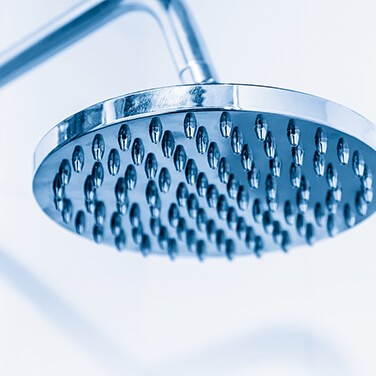Mycobacteria: Exploring the Life in Your Showerhead
By Kylie Wolfe
Standing in your shower under a steady, warm flow of water, you expect to emerge cleaner than you entered. While that’s largely the case, a recent study found that you may be exposed to lung-disease-causing mycobacteria in the process. This popular genus lives in the hustle and bustle of your showerhead, making a home in the slime that inevitably lines it.
Thriving Threats
A study conducted at the University of Colorado Boulder collected 656 samples from households in the United States and 13 countries across Europe to identify the bacterial species present. Researchers used DNA sequencing technology to test each sample, which revealed that mycobacteria are the most abundant genus found in residential showerheads.
Additional analysis showed that these bacteria favor tap water over well water and are more common in the United States than in Europe. The latter trend may be rooted in the regular use of chlorine-based cleaning products in the United States. Since mycobacteria are resistant to chlorine, they may be able to survive the disinfectants better than other bacteria. In Europe, competing bacteria are more likely to survive and may even outcompete these potential pathogens.
Materials Matter
Researchers found that showerhead materials can also determine where these microorganisms will thrive. The study showed that more mycobacteria are found in metal showerheads than plastic. This is believed to be a result of the chemicals released from plastics. They help support a wider variety of bacteria and may prevent this genus from becoming too abundant.
One can gather that mycobacteria are determined to survive, enduring rapid temperature changes and heavy water flow as well as periods of inactivity and dryness. But when they become airborne, they can enter your respiratory system, a common mode of transmission for nontuberculous mycobacterial (NTM) lung infections. Since the bacteria that cause NTM infections are hydrophobic, this may increase the likelihood of aerosolization and inhalation.
Geographical Correlations
Researchers noticed a relationship between locations where NTM lung diseases are more common (Southern California, Florida and New York) and areas where mycobacteria are abundant. These epicenters of activity may help scientists better understand the ideal conditions for this type of bacteria so that it can one day become less of a threat.
Other studies have shown a genetic match between the strains of mycobacteria recovered from patients with NTM infections and those found in their showers. This raises a public health concern since the disease is difficult to treat and more and more cases are being reported.
Prospective Paths for the Future
Beyond the differences in disinfectants and showerhead materials, researchers hope to determine the geographical significance of their findings. Without a lab-based test, signs of mycobacteria are mostly unknown to everyday home owners. The hope is that further research will uncover more information about microbial diversity and distribution.
Learning about your showerhead microbiome can help you understand its impact on your health. While most bacteria that make your showerhead their home are harmless, some aren’t, and scientists are hoping to find ways to minimize this exposure.



